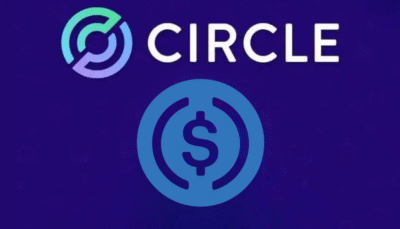This episode of The CoinRock Show was nothing short of electric. Matthias Mazur delivered a deep dive into the current state of the crypto market, tackling everything from regulatory shifts and market movements to insider trading scandals and institutional interest in stablecoins. If you missed it, buckle up—here’s everything you need to know.
Market Sentiment: The Unstable Crypto Waves
Matthias started the show with the big question: Are we back? Over the past two weeks, Bitcoin has been oscillating between $78,000 and $82,000, a movement he characterized as a “choppy downward phase.”
Despite these fluctuations, Matthias emphasized that seasoned traders recognize such dips as prime opportunities for strategic positioning. He remarked,
“This is when you do the work—when the market is dead, when the tourists leave. If you’re in crypto, you don’t panic; you focus and build.”
Recent data underscores this sentiment. Bitcoin’s price recently hit a four-month low, dropping to $76,867 before rebounding slightly to $80,480, marking a 14% decline for 2025 and positioning it 26% below its record high.
Additionally, analysts from 10X Research have cautioned about a potential further drop to $73,000, highlighting the importance of risk management in the current market environment.
Amid these market dynamics, institutional interest in Bitcoin continues to grow. Notably, Cantor Fitzgerald has partnered with digital asset custodians Anchorage Digital and Copper.co to bolster its Bitcoin financing business, reflecting a broader trend of traditional financial institutions integrating digital assets into their portfolios.
This institutional engagement aligns with Matthias’s observation that such indicators suggest “something big is coming,” hinting at a potential market shift driven by these significant investments.
In summary, while Bitcoin’s recent price movements present challenges, they offer opportunities for informed and strategic investors. The increasing involvement of institutional players may signal forthcoming developments in the crypto market landscape.
Big Liquidations & the Risks of High Leverage
One of the most striking stories from the latest episode of The CoinRock Show was the liquidation of a $308 million leveraged Ethereum (ETH) trade. A high-profile trader took a significant risk by entering a 50X leveraged long position on ETH, only to see the entire position liquidated as the market moved unfavorably.
Matthias didn’t hold back in cautioning against such reckless leverage strategies. He stated,
“If you’re throwing everything you have into leverage, hoping to win it all back, you might as well set your money on fire. At least then, you’d enjoy the warmth.”
This incident underscores the inherent risks associated with high-leverage trading. Leverage can amplify gains, but it equally magnifies losses. For instance, data indicates that 71% of retail investor accounts lose money when trading Contracts for Difference (CFDs), which often involve leverage.
Matthias emphasized that while leverage can be a powerful tool for skilled investors, it often resembles gambling for the majority. His advice to traders is clear: Trade smart or don’t trade at all.
This cautionary tale serves as a stark reminder of the perils of high-leverage trading, highlighting the importance of risk management and informed decision-making in volatile markets.
Trump, Binance, and the SEC’s Changing Tides
The Trump administration’s involvement in crypto is making waves. Six of Trump’s former officials have disclosed millions of dollars in Bitcoin holdings, reinforcing the growing sentiment that crypto-friendly policies could be on the horizon.
On the flip side, Binance is making headlines again, with reports claiming that Trump’s family is negotiating a stake in the exchange. While Binance founder CZ dismissed the rumors, the discussion around Binance’s potential U.S. return is gaining momentum.
Meanwhile, the SEC is shifting its stance, dropping multiple lawsuits against crypto firms. Matthias believes this signals a change in regulatory pressure, suggesting that the SEC may be backing away from blanket crackdowns and instead focusing on clear fraud cases.
Tether’s Rising Activity: A Bullish Signal?
Tether’s (USDT) on-chain activity has surged to a six-month high, with over 143,000 wallets making transfers on March 11, 2025. This uptick suggests that traders quietly reload their positions, potentially gearing up for a market rebound.
Historically, increased stablecoin activity during price drops has been a precursor to bullish market movements. For instance, in mid-September 2024, a similar spike in USDT activity preceded a significant price rally in the crypto markets.
Matthias pointed out that whenever stablecoin activity increases while prices are down, it often signals a bullish wave on the horizon. With macroeconomic factors still in play, he predicts stronger buying pressure in the months ahead. Additionally, the stablecoin market has significantly risen in value, gaining around $16.97 billion in 2025, highlighting growing liquidity in the crypto sector.
These developments suggest that traders are positioning themselves for potential market opportunities, indicating a cautiously optimistic outlook for the crypto market in the near future.
Crypto Scams & Security: North Korea’s Latest Attack on Investors
One of the most chilling segments of the show was the revelation of an orchestrated hacking campaign by North Korea’s Lazarus Group. The notorious hacking syndicate has used fake Zoom meetings to infect victims’ computers with malware.
Their methods of Operation?
- Pretend to be investors, VCs, or potential business partners.
- Invite targets to a Zoom call.
- Fake technical issues and convince them to download a software “fix.”
- The malware gives hackers full access to critical financial data—including private keys.
Matthias stressed the importance of staying alert, advising everyone in crypto never to download files from unknown sources, verify identities, and avoid suspicious calls.
Institutional Money is Moving
The biggest institutional move of the week came from Abu Dhabi, which invested $2 billion in Binance—entirely in stablecoins. This is a massive moment for crypto, signaling that large-scale investors are putting their money into blockchain-based finance rather than traditional banking.
Matthias described this as a pivotal moment for the industry, highlighting that the growing acceptance of stablecoins could redefine how institutional money flows into the space
What’s Next to Expect?
The episode wrapped up with a firm reminder: this is a time for discipline, not panic.
Despite the current market volatility, Matthias remains bullish on the long-term prospects of crypto. With institutional money moving in, regulatory clarity improving, and stablecoin adoption rising, the stage is being set for the next major crypto boom.
While the market remains uncertain, one thing is clear—the smart money is already preparing for the next big move.
What do you think? Is this the bottom, or is there more pain ahead? Join the discussion in the next episode of The CoinRock Show.




